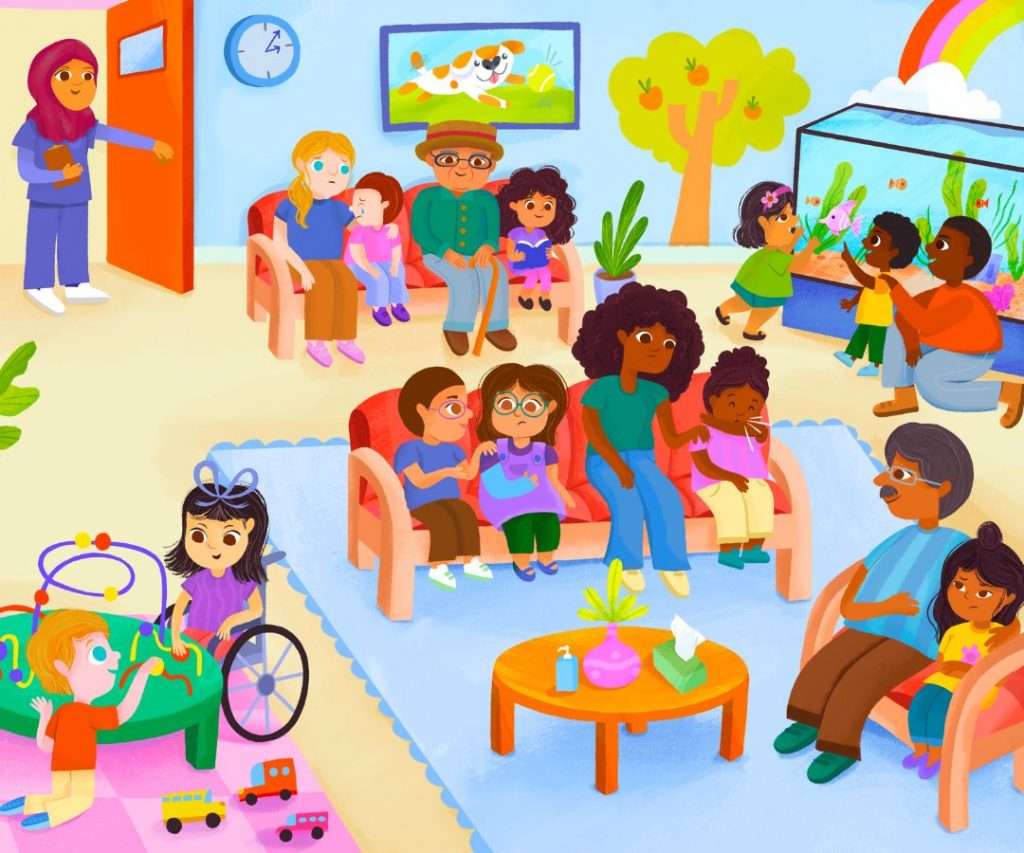Discussing Race
Lesson 3: Empathy: We all Have Feelings and They're All OK
Lesson Goals
- Practice identifying and naming feelings.
- Recognize that everyone has feelings, regardless of how they look.
- Notice when we feel the same as others, even those who are different from us in some way.
Lesson Description
Use the illustration “At the Doctor’s Office” to spark conversation about feelings and help children build empathy and connections with people who are different from them.

Lesson Plan: What Are Feelings?
Play "Us Time" Song
Review Agreements
Discussion: At the Doctor's Office
Movement: Feeling Like Others
Closing Discussion: Empathy
Thank You: Share the Us Time Closing Song
Standards
Early Learning Outcomes Framework: Goal P-SE 6, Goal P-SE 7, Goal P-SE 9, Goal P-SE 11, Goal P-LC 1, Goal P-LC 2, Goal P-LC 5, Goal P-LC 6.
CT ELDS: SE.36.13, SE.48.12, SE.60.15, SE.36.7, SE.36.8, SE.48.7, SE.48.8, SE.60.9, SE.60.10, SE.60.11, SS.60.1, L.36.5, L.48.5, L.60.5, L.36.7, L.48.7, L.48.11, L.36.14, L.48.13, L.48.15.
Vocabulary
Empathy: sharing a feeling with someone else
What You'll Need
- Family Photos Collage
- Family photos from each student
- Board or big paper and pens for creating graph/visualization
- “Us Time” song
- “Thank You” goodbye song
Lesson Quick Links
- “Us Time” song
- Family Photos Collage
- “Thank You” goodbye song
- Discussing Race with Young Children guide
Family Engagement Materials
From this lesson, you can share:
- “Us Time” song
- Discussing Race with Young Children: A Step-By-Step Activity Guide
Activity: Get-Well Gift
Activity: For the Birds
- Community Colors interactive (also available in the Sparkler app for programs using Sparkler)
- “Thank You” goodbye song




